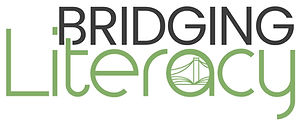Many of you are halfway through the school year, and January is the perfect time to revamp and get more organized so that you can create a better work life balance, but this can often feel overwhelming or you may not have a clear understanding of where to start!
I’m here to help! Keep reading to learn the 5 MUST-DOs to decreasing your stress and increasing your productivity!

#1: Know the standards!
Knowing the standards is a great example of having a path to follow. When you don’t have a clear understanding of what it is you are teaching then you are probably struggling to plan, and it may seem like it is taking a little longer to get standards taught.
I don’t mean memorize the standards, but rather understand the what and how behind the content you are expected to teach.
For example: do you find yourself scrolling the internet looking for materials to teach with? Are you looking up definitions to help you understand terms that you are teaching? We’ve all been there! Myself included.

#2: Establish a structure for your day.
Routines are important for your students but also for yourself. This gives you the ability to know what is happening next and also plan accordingly.
Ask yourself the question: What will students be doing from the moment they walk into the classroom to the point when they leave my room?
For example, my students will come into the classroom and read a message that is projected onto the board. This varies from day to day but it gives me the ability to collect my things after switching classes or coming in from lunch/ a special. Some ideas are things like reading independently, journal entry, or a form of a warm-up. Afterwards, we have our minilesson and students will have practice to complete independently. They end their time in my class between meeting with me in small groups and working on their goals. 5 minutes before the end of class, we clean up and head back to the meeting area. We discuss the objective for the day, things we read in our books, stories they were working on and goals that some students mastered.
This routine allows me to plan out my day quickly. I know that I need to have each of the components that I shared and I stick to this because it also allows my students to know what to expect from the day. I get less questions on what we are doing and more focused time on their assignments.

#3: Define your end game.
Having a plan, especially if your school or district, doesn’t provide you with one is critical to ensuring you are on track to covering all your standards by the end of the year.
Start by taking out your calendar and identifying the dates that you might hold in your classroom or at school.
Once you have those dates entered into your calendar you will now have a better idea of how many instructional days you have each month. It’s always very surprising how much things get cut back with assemblies and such.
Then, I recommend planning out your content for the next three months or even the remainder of the year. And before you ask, yes, you might have to make adjustments. But some plan is better than no plan at all.
If you are not sure what to teach, I have a cheat sheet guide to the units I use in my classroom. These are aligned to your writing and are available for 3rd through 6th grade. Did I mention that these are completely FREE? You can get that here!

#4: Batch your lessons.
Your goal is to stop planning each week and instead look to plan for a much longer period of time.
After some time, I realized that the content that I teach each year doesn’t change. The progression in which I teach it doesn’t change, what changes is the methods in which I deliver the materials based on the needs of my students.
Batching your lessons essentially means that you are prepping a larger amount of materials for a longer length of time. For example, I might spend a week really planning out lessons for the next month or two and then the following week is devoted to preparing the materials. I might make all my copies in one day, spend the next prepping games, the following making books for small groups, etc.

#5: Reuse your activities.
Take some time and create a bank of activities that you feel comfortable with using. As you plan out your lessons, pull from that list of activities that you feel most comfortable with.
This will reduce the amount of time you spend searching online for things to fill your lessons and it will increase your students’ understanding of the skills you are teaching.
When your students have had multiple opportunities to practice an activity, the focus will shift from playing the new game to focusing on the content they are learning. It makes a BIG difference in your instruction.
SO the big message here is to not be afraid of reusing the activities you already know work for you and your students!
Want to watch the video version of this post? My YouTube videos go up every Sunday! Watch and subscribe here!
If you're thinking this list sounds great, but I need help, I invite you to check out the Bridging Literacy community. This is a group of teachers who are supporting one another using authentic and rigorous resources but also helping to create more stability in support of finding a better balance between work and home.
And here are some Freebies for you! Enjoy!
Common Core Connect - Easily printable resource that gives great vocabulary terms
Common Core Companion - A great starting guide for understanding your standards across 3-5
_edited.jpg)